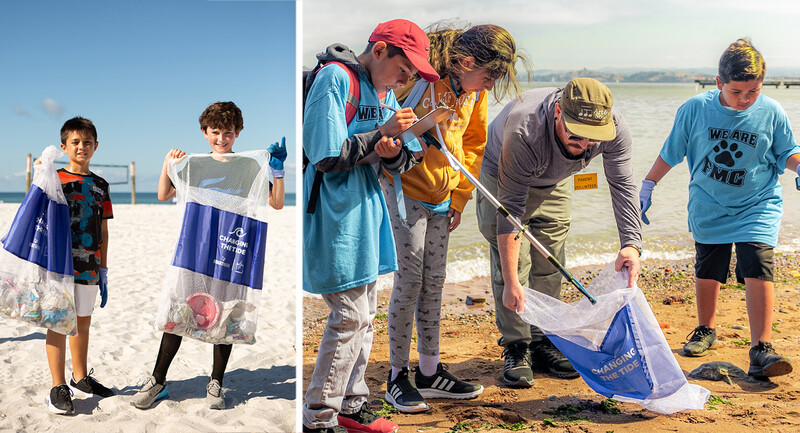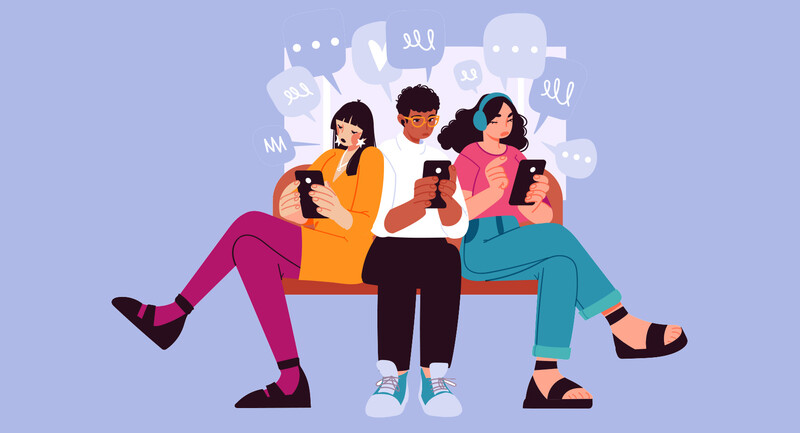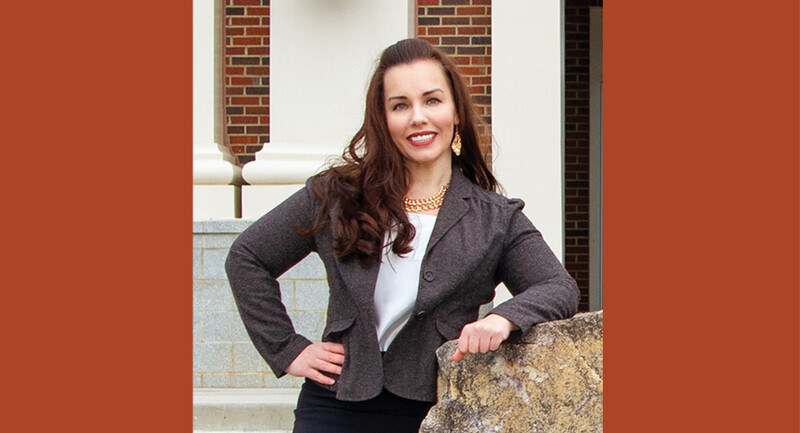When the pandemic’s shelter-in-place orders relegated students to a two-inch box on a laptop screen, educators instinctively understood that we would have to shift our practice to prioritize student engagement more fully. Despite its many challenges, the pandemic has reified the importance of curricular organization, active learning strategies, and authentic assessments as essential tools for deep engagement. In response to the ever-changing COVID learning landscape, many teachers at our high school deliberately chose to adopt more student-centered, project-based practices that had once felt too costly in class time, content coverage, or perceived rigor.
The challenge of engagement was steep. After maneuvering our way through the spring of 2020, our educators reflected in professional learning time on their pre-pandemic practice to adapt their classroom techniques for remote instruction. We heard from colleagues who had experience teaching online summer school or who were learning in online graduate programs. We worked in teams to redesign and “Google-proof” our assessments. At every juncture in curricular decision making, we invoked the visual of our students’ faces, shrunken into miniatures and arrayed in tiles on a screen.
Straight From the Mouths of Students
Our students noticed the changes we had made. At four intervals throughout that first year of unprecedented instruction, our school leadership team surveyed all 9th-12th grade students during class periods, asking them to describe the specific assignments, assessments, and experiences they found most engaging. In sifting through some 4,187 lines of open-ended and Likert scale questions, clear patterns emerged around the types of work and practices that sustained engagement.
Regardless of the discipline, the experiences students valued most were ones that placed them in partnership with peers, in conversation with the world around them, and in a safe space to explore, reflect on, and share their own experiences and ideas. They valued the opportunity to gather their own data on their carbon consumption and trash output in science classes and to apply their scientific knowledge to analyze the effects on the environment. They raved about simulations in their social science courses that turned them into moot court attorneys and UN security council members, as well as opinion papers in English that placed their ideas and questions at the center. They enthused over drawing portraits of essential workers and taking photographs that documented quarantine through their lens. They wanted to problem-solve in teams, whether in calculating cosines in math or building a website for a new restaurant in Spanish.
Beyond specific assignments, students described universal classroom practices that drew them into learning. They noted that transparency matters in how teachers organize learning, share goals, and describe assessments. Clarity in purpose helped students understand where they were headed and gave them confidence that they could get there. They valued knowing the teacher cares about them as individuals and appreciates their contributions, which they perceived through whole class check-ins, one-on-one meetings, and the flexibility to complete their best work — even if it didn’t always fit within the prescribed timeline.
This fall, many schools understandably began to fill perceived gaps with more content, homework, and skill-and-drill activities. Although our school’s shifts had yielded engagement dividends, they took more time to plan, teach, and learn. We had made the changes to our courses out of necessity. Yet, remote learning had exposed the limits of how we typically foster engagement and gave us new perspectives into our students’ experiences.
We decided to explore how we might carry forward the best of what we are learning from COVID-era instruction about student engagement.
Engagement Through Motivation
At first glance, engagement as a concept can be abstract and up for interpretation. Is it the student’s responsibility to be engaged or the teacher’s responsibility to cultivate that engagement? Fortunately, we educators had enough humbling moments over Zoom to appreciate that increasing engagement doesn’t depend on our ability to be stand-up-comedians, or on our knowledge of the latest online platform for turning test review into a game. True engagement is about people — and rests at the intersection of motivation and active learning (Barkley, 2010).
The first key to engagement is motivation. Research suggests that educators can predict students’ motivation responses based on whether they value the task and can expect to succeed at it (Brophy, 2004). Students are more likely to value, and thus be intrinsically motivated by, a task that offers genuine choice and allows them to work toward something they find inherently interesting (Deci & Ryan, 1985).
In our own school, as the skies in northern California turned an unnerving orange hue and wildfires ravaged the West Coast, students engaged in learning experiences around the climate crisis. They considered solutions to ocean acidification in chemistry, wrote eco-poetry in English, and designed sustainable fashion in Spanish. We create the conditions for increased motivation by ensuring students find personal connection to what they are learning and with whom—including seeing themselves and the world around them reflected in the curriculum.
The experiences students valued most were ones that placed them in partnership with peers, in conversation with the world around them, and in a safe space to explore, reflect on, and share their own experiences and ideas.
Moreover, students are motivated if they believe they are equipped with the skills and tools necessary to succeed—the foundation of self-efficacy (Bandura, 1997). Students need to know that the teacher has their back, which teachers demonstrate by nurturing strong teacher-student relationships with, and holding high expectations of, every student (Hattie & Zierer, 2018). In our student surveys, the importance of choice and clarity emerged again and again in their descriptions of their most engaging learning experiences. They valued having agency in determining their learning teams, specific topics, and the final forms their projects would take.
Engagement Through Active Learning
The second key to engagement is active learning. Learning by doing often plays out as project-based or inquiry-based learning, simulations, guided discovery, and structured, hands-on activities. Students might have opportunities to construct knowledge in community through discourse and social interactions (Berkeley Center for Teaching and Learning, 2021). In our own classes, we reimagined tried-and-true classroom active learning strategies for remote collaboration, like expert and jigsaw groups, see-think-wonder protocols, and KWL charts as organized breakout rooms, guided chats, and collaborative Google Jamboards. Learning is further encoded through metacognition, a practice of monitoring one’s own thinking, performance, progress, and cognitive process (Bransford, Brown, & Cocking, 2000). Explicitly scaffolding metacognition—whether through an exit ticket, regular reflection, or weekly course feedback—improves learning outcomes by helping students better understand what they know, what they don’t know, and how they got to where they are. The process is vital to students’ ownership of their learning and ability to apply their learning to new situations (Bransford, Brown, & Cocking, 2000). Teaching metacognition is as simple as prompting students to plan the strategies they will use for a task, monitoring their thinking and progress as they go, evaluating their performance against a given standard, or reflecting on the sum of their learning (Tanner, 2012). Each of these moves increases students’ active participation in their own learning, which increases engagement.
Whether on campus or remote, our students – their ideas, aspirations, wonderings, contexts, and passions – must remain at the center of our instruction. By being intentional with curriculum design and assessment, we can increase students’ connection to the learning process and our own enthusiasm for what and whom we teach.
Reflection for the Next Chapter
A crucial step in embracing COVID-era lessons is to share them. Over the past two years, our school has dedicated opportunities for reflection, collaboration, and faculty-led sharing sessions that draw upon each individual's experiences and insights. The answers reside within each teacher; the well is deep.
The following set of questions is one we have used to guide individuals and teams in school-wide professional learning, departmental and course team conversations, and annual individual reflections on student feedback:
Valuing the Work:
What matters to my students? How do their interests, passions, concerns, and hopes show up in my course and in my discipline?
How do I structure choice, how often, and how does choice manifest itself in the curriculum?
Where are the existing and potential connections between what matters to my students and my course learning outcomes?
Expecting to Succeed:
What knowledge, skills, and gifts do my students bring to the classroom? How do I explicitly build a bridge from these starting points toward clearly defined learning goals and big ideas?
What are my strengths in affirming for my students that I care about them, value their ideas, and believe in their capacity to succeed? Where are my blind spots?
How will I renew in myself each day the conviction that my students can and will succeed?
Learning by Doing:
When my students connect most with my course materials, what are they doing? How often in my curriculum are there opportunities for revision and multiple submissions to demonstrate growth?
In what ways do my students discover content through exploration, collaboration, and authentic application?
When do my students exhibit pride or express joy in their learning?
Reflecting on Learning:
How do I structure opportunities for reflection before, during, and after a unit? Can my students articulate their learning of a lesson, a concept, or the essence of my entire course?
How do my students document the strategies they use to solve problems, answer prompts, or plan projects?
Where can I incorporate reflection on their learning into each of my lessons; what they have learned, how they have learned, and what they are still curious about?
Our profession is swirling with big questions about what education should look like on the other side of this pandemic. We do not have to slip back into the well-worn grooves of the way things were. Instead, we can embrace the wisdom of practice to write the next chapter, setting a bold and hopeful intention for what teaching and learning might become.
Perhaps we yearn for an education that brings into fullness the elements we only dabbled with when we felt we had extra time—an education that is truly dynamic and student-centered, collaborative and more human; slower and deeper; that engages students in grappling with the challenges and opportunities of the world around them, fosters a sense of empathy and interconnectedness, and prepares them to lead with courage and confidence. We can make it so.








